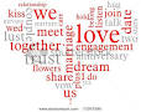
Then of course I am thinking a lot about marriage these days as Susan and I are rushing headlong through our 50th year of being married. We were married August 23rd, 1966.
David Brooks is always elegant and thoughtful. He doesn’t explain why he chose to write about marriage on that particular day, though one might well presume it is related to Valentine’s Day. He talks about three different “lenses” on marriages: psychological, romantic and spiritual. The psychological seems to be a Myers-Briggs version of partnerships. Find someone with complimentary traits or particular traits that you might be inclined to like. The romantic is about passion and attraction, and of course always runs into the problem of wearing thin. And then spiritual, ways of finding and supporting the sacred in each other.

The Actual Dance has a lot to say about this question. What it says to each member of the audience will, I am sure, depend on each audience member’s own experience in life and love and marriage. It imagines the possibility of two 20 year old ‘kids’ thinking they are in love. In the play, and with the hind sight of nearly 50 years, I say: “I don’t think two 20 year olds really understood what love meant.”
Yet it meant something, otherwise why did we want to get married? There were a lot of reasons. Let’s start with Passion. Clearly, we had a sexual passion for each other and in 1966 there was still this idea that if you had sex with someone you probably should get married. We also had strong family role models of marriage. My memory now is that it felt like something we were “supposed to do” if we felt that way about each other. In retrospect however I now understand that even back then young folks were having lots of sex with multiple partners, just not talking about it. Ultimately, passion is a good start for marriage. It may well be what drives people together. A good start if you will.
There is another factor when you get married at 20 years old: You end up growing up together in a much different way that if you get married later in life. Although, according to Brooks, people don’t change much over a lifetime. That has not been our experience. Instead, we have been partners in life’s most significant moments. Maybe we are luck – or unlucky. A year after we got married Susan’s mother and my father died – two weeks apart. We had our first child at 26 and our second and 28 years old. These moments are significant. They create shared, highly emotional moments. They begin to create a single shared existence in ways that I think are different than if you experienced those moments either alone or with different partners.
These shared moments and experiences begin to create a shared “inner life.” This is the ultimate connection that Brooks calls spiritual and which Jacob Needleman calls: “The Wisdom of Love.” It is the idea of being in relation to someone with the purpose of supporting their own quest for meaning and purpose in life. I have written about this before.
Ultimately though, real love and real marriages are existentially intertwined. There is a time when people become one. It is a process. The lines in the show are: “I am the other half of that which makes Susan and me complete.” And “When is it more important to be whole then when our body is badly broken?” referring to me experiencing Susan’s cancer as if it were also in me.
What does one mean? It is a spiritual bonding – it is both physical and soul. We can share breath as we kiss, and we can be complete only when we are with each other in some real physical way in the presence of the one life we have created together.

 RSS Feed
RSS Feed






